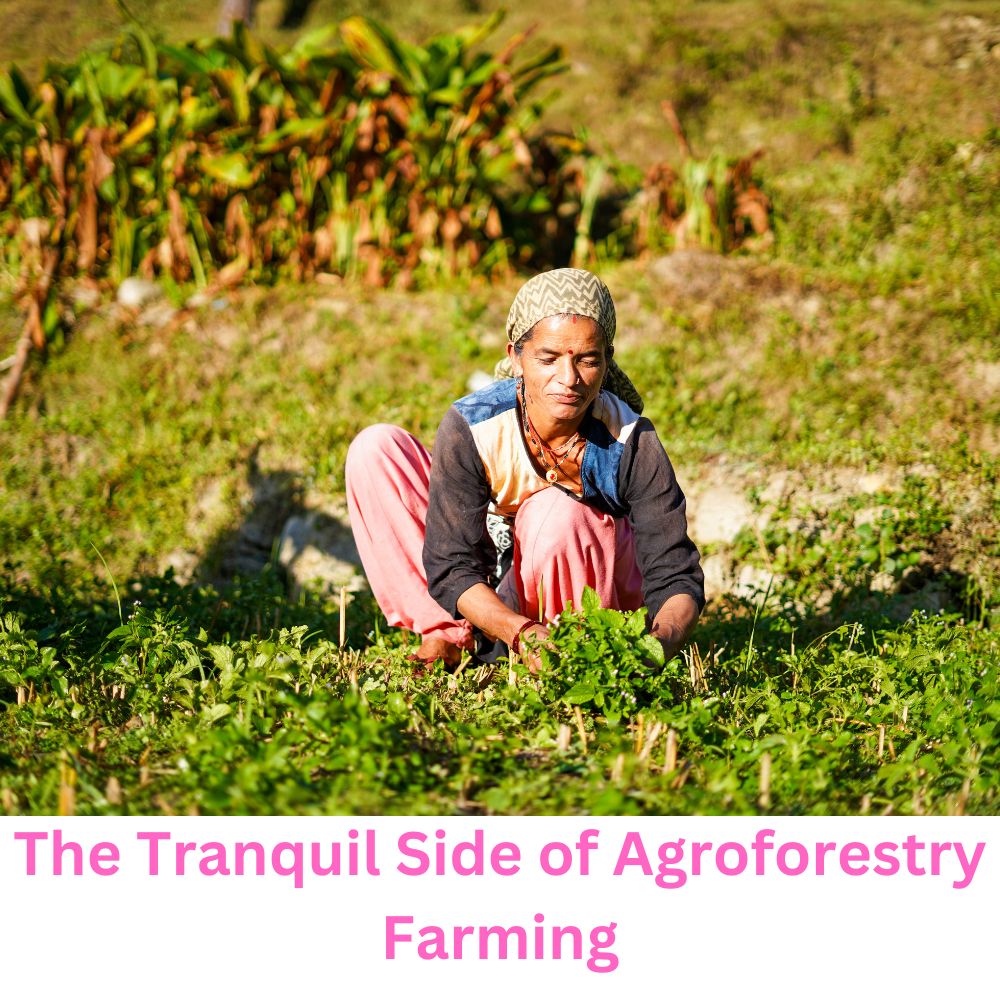Introduction
Amid the hustle and bustle of modern agriculture, there exists a serene side that is often overlooked – agroforestry. This unique approach to farming combines the benefits of trees, crops, and sometimes livestock in an integrated and harmonious system. Beyond its ecological and economic advantages, agroforestry offers a peaceful respite from the noise and stress of conventional agriculture. In this article, we will explore the soothing and serene aspects of agroforestry farming, highlighting how it nurtures the land and the human spirit.
Nature’s Oasis: The Serenity of Agroforestry
Agroforestry landscapes are akin to natural oases amidst modern agriculture’s urban sprawl and industrialization. Here’s why agroforestry is often described as a tranquil retreat:
a. Gentle Canopy: Trees in agroforestry systems provide a gentle and soothing canopy that offers shade and protection from the elements. This natural shading effect creates calm and serene environments for plants and humans.
b. Rustling Leaves and Birdsong: Trees in agroforestry systems attract diverse wildlife, including birds. The rustling of leaves and melodious birdsong create a serene soundscape far removed from industrial agriculture’s mechanical noise.
c. Vibrant Seasons: Agroforestry landscapes change with the seasons. Blossoms in spring, lush greenery in summer, vibrant foliage in autumn, and intricate branch patterns in winter create a dynamic and visually captivating environment.
d. Biodiversity: Agroforestry promotes biodiversity by providing habitat and food sources for various plant and animal species. This diversity adds colours, shapes, and movement to the landscape, creating a rich tapestry of life.
e. Natural Elements: Agroforestry landscapes often incorporate natural features like ponds, streams, and wetlands. These elements not only enhance the overall beauty of the scenery but also provide opportunities for reflection and connection with nature.
Stress Reduction and Well-being
The tranquillity of agroforestry landscapes extends its benefits to the well-being of those who work and visit these areas:
a. Stress Reduction: Spending time in natural settings like agroforestry farms has been linked to stress reduction and improved mental health. The calming influence of trees and the natural environment can help reduce anxiety and promote relaxation.
b. Connection with Nature: Agroforestry provides a unique opportunity for individuals to reconnect with nature. Engaging with the natural world through farming or leisure fosters a sense of connection and mindfulness.
c. Physical Activity: Farming in agroforestry systems often involves physical activities like planting, harvesting, and maintaining trees and crops. Engaging in these activities can improve physical fitness and overall well-being.
d. Therapeutic Benefits: Some agroforestry farms are even designed to offer therapeutic benefits, such as horticultural therapy programs that help individuals with physical or mental health challenges.
Sustainable Living
Beyond its serene and calming qualities, agroforestry embodies principles of sustainable and holistic living:
a. Mindful Consumption: Agroforestry promotes mindful consumption by offering high-quality and locally sourced products, including fruits, nuts, timber, and non-timber forest products. These products often have a lower environmental footprint compared to their mass-produced counterparts.
b. Sustainable Resource Management: Agroforestry encourages sustainable resource management, including responsible water use, soil conservation, and biodiversity conservation. These practices contribute to the long-term sustainability of the land and its resources.
c. Community Engagement: Agroforestry often fosters a sense of community and collaboration. Sharing resources, knowledge, and experiences with neighbours and fellow farmers can create a supportive and fulfilling social environment.
d. Holistic Approach: Agroforestry embodies a holistic approach to farming, recognizing the interconnections between ecological, economic, and social aspects of life. This holistic perspective can lead to a more balanced and fulfilling lifestyle.
Educational and Recreational Opportunities
Agroforestry landscapes provide unique opportunities for education, recreation, and reflection:
a. Educational Programs: Many agroforestry farms offer educational programs, workshops, and tours that connect people with nature and teach them about sustainable farming practices. These programs are not only informative but also enriching and empowering.
b. Recreational Activities: Agroforestry farms can serve as venues for various recreational activities such as hiking, bird-watching, and camping. These activities allow people to immerse themselves in nature and recharge their spirits.
c. Retreats and Meditation: The serene surroundings of agroforestry farms make them ideal locations for retreats and meditation practices. Many individuals and groups seek these peaceful spaces for contemplation and relaxation.
Conclusion
Agroforestry farming is not just about maximizing agricultural productivity; it is a harmonious coexistence with nature that nurtures the soul. Amid our fast-paced and technology-driven world, agroforestry offers a tranquil respite where individuals can reconnect with the natural world, reduce stress, and promote well-being.
The serene side of agroforestry reminds us that farming can be beautiful and contemplative. It demonstrates that agriculture and nature need not be at odds but can exist in harmony, benefiting both the land and those who tend to it. As we continue to explore sustainable and fulfilling ways of living, agroforestry stands as an embodiment of tranquillity, mindfulness, and a deep appreciation for the beauty of our natural world. In the shade of agroforestry, we find serenity for the soul and the land.
